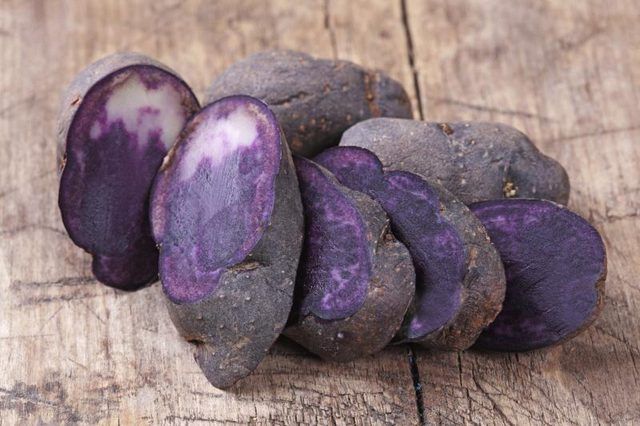Bulbs
Flower Basics
Flower Beds & Specialty Gardens
Flower Garden
Garden Furniture
Garden Gnomes
Garden Seeds
Garden Sheds
Garden Statues
Garden Tools & Supplies
Gardening Basics
Green & Organic
Groundcovers & Vines
Growing Annuals
Growing Basil
Growing Beans
Growing Berries
Growing Blueberries
Growing Cactus
Growing Corn
Growing Cotton
Growing Edibles
Growing Flowers
Growing Garlic
Growing Grapes
Growing Grass
Growing Herbs
Growing Jasmine
Growing Mint
Growing Mushrooms
Orchids
Growing Peanuts
Growing Perennials
Growing Plants
Growing Rosemary
Growing Roses
Growing Strawberries
Growing Sunflowers
Growing Thyme
Growing Tomatoes
Growing Tulips
Growing Vegetables
Herb Basics
Herb Garden
Indoor Growing
Landscaping Basics
Landscaping Patios
Landscaping Plants
Landscaping Shrubs
Landscaping Trees
Landscaping Walks & Pathways
Lawn Basics
Lawn Maintenance
Lawn Mowers
Lawn Ornaments
Lawn Planting
Lawn Tools
Outdoor Growing
Overall Landscape Planning
Pests, Weeds & Problems
Plant Basics
Rock Garden
Rose Garden
Shrubs
Soil
Specialty Gardens
Trees
Vegetable Garden
Yard Maintenance
How to Plant & Care for a Blue Potato Bush
How to Plant & Care for a Blue Potato Bush. Adding interest to the garden and novelty to the dinner plate, blue potatoes, (*Solanum tuberosum*) grow wherever the more well-known white potatoes grow. Potatoes require deep, well-draining, loose, acidic soil in full sun. Varieties include 'Adirondack Blue' (*Solanum tuberosum* 'Adirondack Blue'),...

Adding interest to the garden and novelty to the dinner plate, blue potatoes, (Solanum tuberosum) grow wherever the more well-known white potatoes grow. Potatoes require deep, well-draining, loose, acidic soil in full sun. Varieties include 'Adirondack Blue' (Solanum tuberosum 'Adirondack Blue'), 'All Blue' (Solanum tuberosum 'All Blue') and 'Purple Majesty' (Solanum tuberosum 'Purple Majesty').
Prepare to Plant
Prepare the potato patch by mounding soil in rows 10 to 12 inches tall. This ensures adequate drainage. Work 3/4 pound of a balanced fertilizer, such as 10-10-10, into every 10 feet of row before planting.
Blue potatoes do best in soil with a pH of 4.8 to 5.5. You can find out your soil's pH level using a home soil test kit, which you can buy from a garden store. Use distilled water for accurate results.
Cut the blue seed potatoes into egg-size chunks that each have at least one bud. Place the potatoes in a paper grocery bag, roll down the top of the bag, and let them stand at room temperature for two to three days. Shake the bag to loosen the potatoes, and allow them to sit for another two to 28 days before planting.
Planting Blue Potatoes
With the edge of your garden hoe, make a 4-inch-deep trench down the center of each garden row. Place the prepared seed potatoes in the trench, with buds facing upward, 8 to 12 inches apart. Cover the trench with soil and tamp the soil by tapping the flat side of your hoe on top of the row.
Three to four weeks after planting, apply 3/4 pound of 10-10-10 fertilizer, spreading bands of fertilizer 5 to 6 inches from the center of the row on either side. With a garden hoe, pull dirt from the alley between rows over the fertilizer for a light covering. Water the area after applying the fertilizer.
Hill Potatoes to Avoid Sunscald
Potato tubers growing near the soil surface can become exposed to light, leading to sunburn, or sunscald, which turns the exposed portion of the potato green and bitter-tasting. Avoid this by using a process called hilling. With a garden hoe, pull 2 to 3 inches of soil from the alley between rows up around potato plants when the plants are approximately 6 inches tall. It is OK to mound soil around the potato plant stems, as it provides more support for the plants. Repeat the hilling process every couple weeks until harvest.
Water Carefully
A constant, moderate level of moisture in the soil produces smoother, more well-formed potatoes. Too much fluctuation causes rough, knobby potatoes. Pick up and squeeze a handful of soil. If it doesn't drip, but your hand is moist, it doesn't need watering. Potatoes usually need 1 inch of water a week, from rain or watering. Spread a 2- to 4-inch layer of mulch over the area to conserve and maintain moisture.
Preventing Pest and Disease Problems
After planting potatoes, avoid damage to young plants from flea beetles with row covers, a special type of garden fabric. Place summer weight row covers over the potato plants after planting and remove them when the weather turns hot.
Potato beetles, hard-shelled bugs with black and gold stripes, are a major pest for potatoes. Hand-pick potato beetles and their larvae off of plants. Crush egg clusters, which are patches of tiny orange eggs, usually on the undersides of the leaves.
Spray the potatoes with a strong stream of water from the hose to remove aphids or leaf hopper nymphs from potato plants.
When watering or treating for pests, wet the plants early in the morning, rather than late in the day. This allows the plants to dry during the day and prevents disease problems.
Reduce the chance of insect and disease problems by keeping the potato patch weed free, which promotes good air circulation.